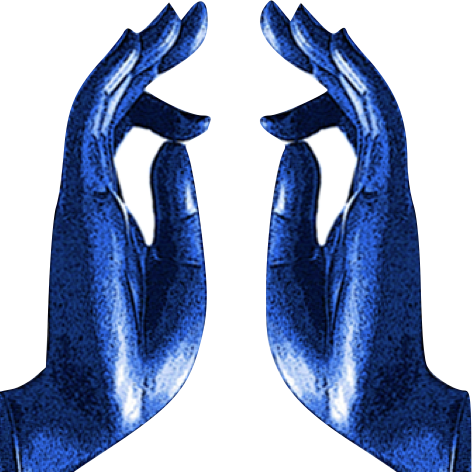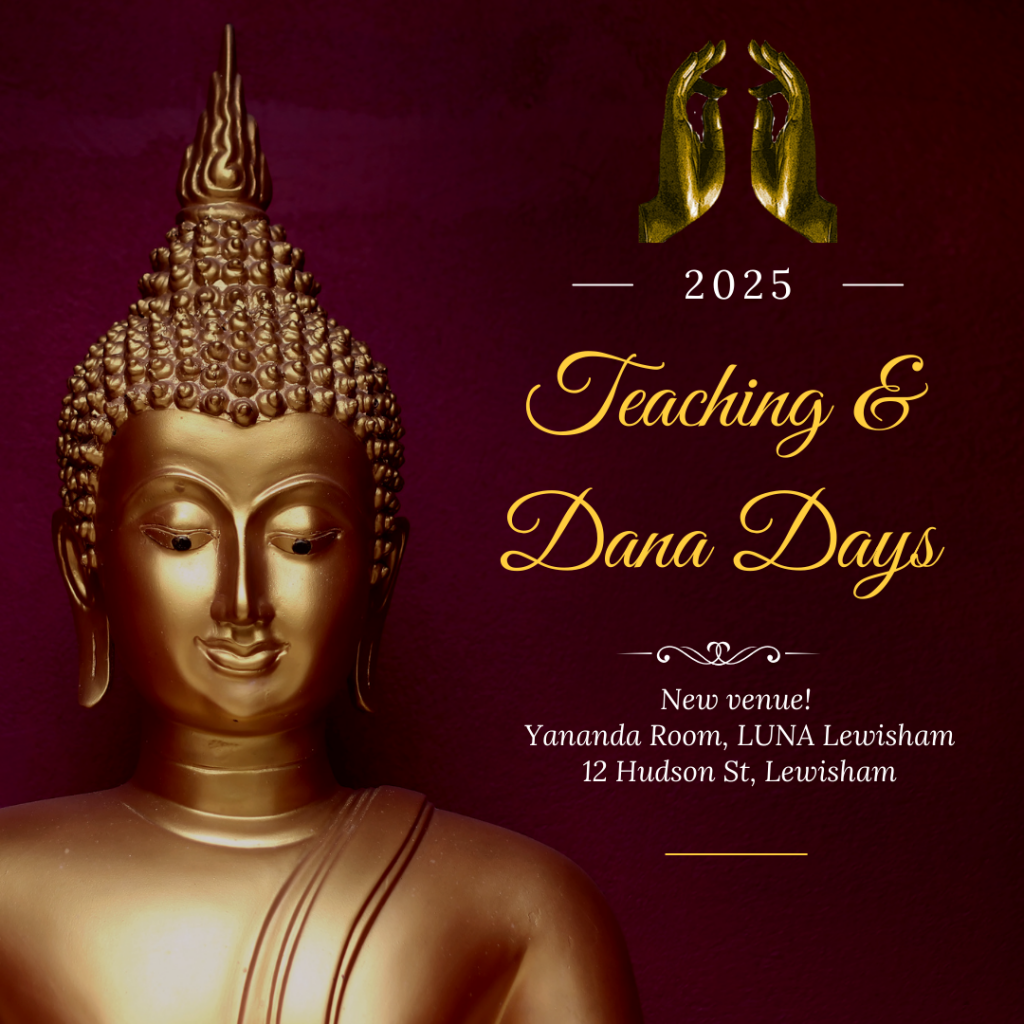At home, we have a shrine room where Molly and I pray each day as well as the place to sit for a period of meditation. On the mantel above the fireplace are a number of Buddha statues together with prayer wheels and on the walls are tankas and embroidered Buddhist items sourced from a dozen countries where the Buddha has left his footsteps. These include a marble Buddha from Burma, a Guanyin from Putuo Shan collected when travelling with Bhante Tejadhammo, momentos from Bodh Gaya, a birthday gift of a Buddha from a Bhutanese friend, prayer wheel blessed at Jokhang Monastery at Lhasa and a Buddha gifted by a Tibetan nun in Hong Kong. On this altar are photographs of the best teachers, our parents. Surrounding these images are the hundreds of books on Buddhism that we refer to from time to time to expand on our spiritual learning.
Why have a display of material items when the Buddha emphasized simplicity in following the Dhamma, remembering that the essence is in our hearts rather than external? After all, in one of his teachings, the Buddha on being told by other monks that Attadatta had continued going about his personal practice rather than show concern about the Buddha’s impending demise, advised the monks that Attadatta is doing the correct thing. The spiritual path is refined within and not in pursuing the form of the Buddha.
In fact, the earliest Buddhist sites after the passing of the Buddha such as Sanchi, do not have any images of him in line with the Buddha’s wish not to be worshipped as a god. He hoped to have his teachings understood and skillfully practiced for it to be spread widely for the good of all instead of being put on a pedestal. It was much later that statues and other items were created, mainly through the imaginations of the artisans’ perceptions of how the Buddha should look like. All the gathering of physical forms of statues and books do not matter if we do not practice!
Coming back to our shrine room, we have the things to support following the path of the Dhamma. Along a spiritual path, we study teachings learned from experiences of the ones who walked before us. As with many Buddhist followers, images serve as reminders of the Buddha, our teachers and his teachings. They help provide a focus for prayers, chanting and meditation so that we make commitments when seeking guidance passed on through those teachings in order to bring benefit to ourselves and others. It is not idolatry as perceived by some, both believers and non-followers, who believe most Buddhists only show worship with external obeisance through resplendent monuments to prove dedication to the Buddha.
In our hearts, kneeling before forms of the Buddha and the Dhamma is like seeing him in our minds. It reinforces the spiritual journey ahead for us, beginning with setting the direction of travel. Taking refuge and the Precepts are good opportunities to reflect on the ongoing status of our being. Practice builds greater appreciation of the principles of suffering, impermanence and non-self. Commitment to the teachings of Ahimsa (non-harming) and Karuna (compassion) daily, feeling you are in the presence of the teacher, provides strong reinforcements and reminders in the heart for practice. When we meditate being present in such an environment, the feeling of spiritual energy can encourage efforts to pursue tranquillity and realisation of the things that we seek. Continued investigation of our personal experiences will broaden understanding of our learning with teachers and fellow travellers in our community. Contemplating on the Buddha forms can grow understanding of the Dhamma encouraging the cultivation of appropriate ethical behaviours as well as provide the platform to combine with positive meditative practice. Indeed, having images of the Buddha within sight or close at hand for an unwell person can be a great healing aid during those times of discomfort.
Dhamma books carry information on Buddhist texts and where teachers share their wisdom. Such information was accumulated from their own knowledge and experiences against which readers can investigate and verify according to their own perspectives. This was what the Buddha advised the Kalamas to do when he taught them. The form of a library transformed spiritual experience through the mind by providing information on the teachings for us to reflect on and finesse our daily behaviours. It is like understanding the Noble 8 Fold Path to transform wisdom from the Head to practice from the Heart.
Images of the Buddha do not merely relate to him alone but can be used to reflect our experiences of all teachers and learning in our lives, past and present. They are also for contemplating on the challenges and pleasure our parents had in bringing us up, other family members and friends for their guidance, the teachers who educated us, work colleagues and any others who touched us in this life. Reminders to have gratitude for our journey of personal morality and sharing such learning with others that we know can add great benefit to the world around us.
It also presents an opportunity for us to view our own physical form as the impermanent shell that it is. This body has served as our temporary abode in this life-cycle and we need to treasure what it has gone through to support our existence thus far. However, it is also existential evidence of life’s impermanence (anicca) looking in the mirror at the changes in our external features and ongoing effects of ageing that the Buddha taught in the First Noble Truth. Whether it is just sitting in quiet to reflect or meditating on the Satipattana, it helps us to see the never-ending changes in ourselves. We look about us at the young friends from school and in the community – when did they grow so old and then see our children in middle-age with their children moving into adulthood. Photographs and other things provide reflections of those who have left us with gratitude for the richness that add wisdom to our present. Through realisation of the true changing nature of things and learning to let go of unnecessary burdens, one’s understanding can expand. There are unending lessons on this spiritual path along which we should not be clouded by nor forget the forms that can assist us on the way.
We can end with a story about the monk Vakkali. It is said that he had great devotion to the Buddha but lamented over not having the opportunity to meet with the teacher. When he fell gravely ill in old age, the Buddha heard about his wish and took the effort to visit him. Vakkali told the Buddha that he regretted not having time left to spend with the teacher. The Buddha reportedly said to him that he had been looking in the wrong direction:
If you want to see the Buddha, train yourself to see the Dhamma. When you see the Dhamma, you see the Buddha.
The Buddha forms that we see function as mirrors to reflect ongoing awareness of our learning and reminder of our spiritual practice.


